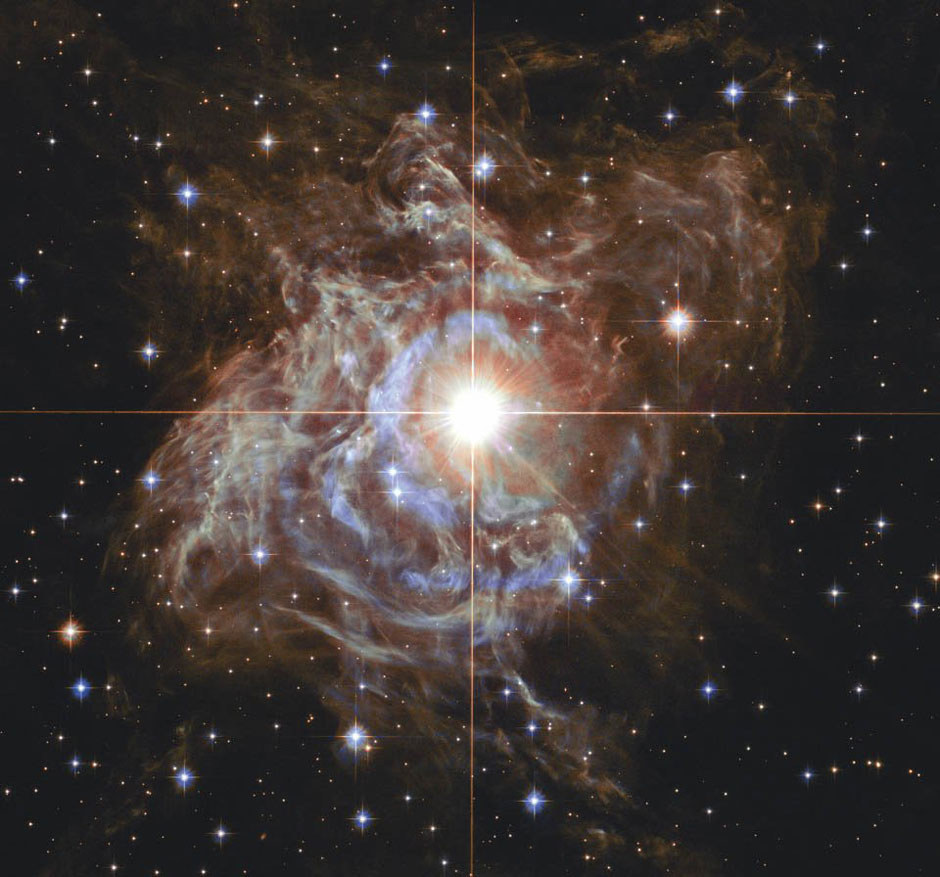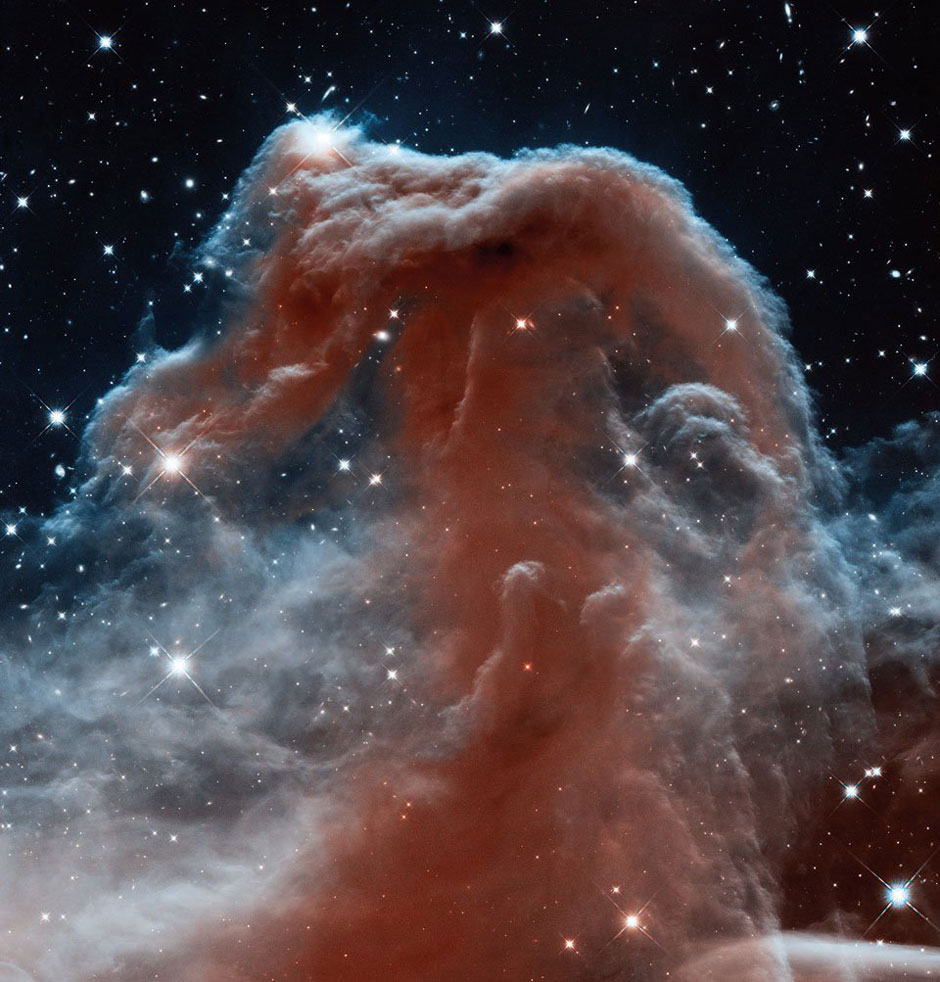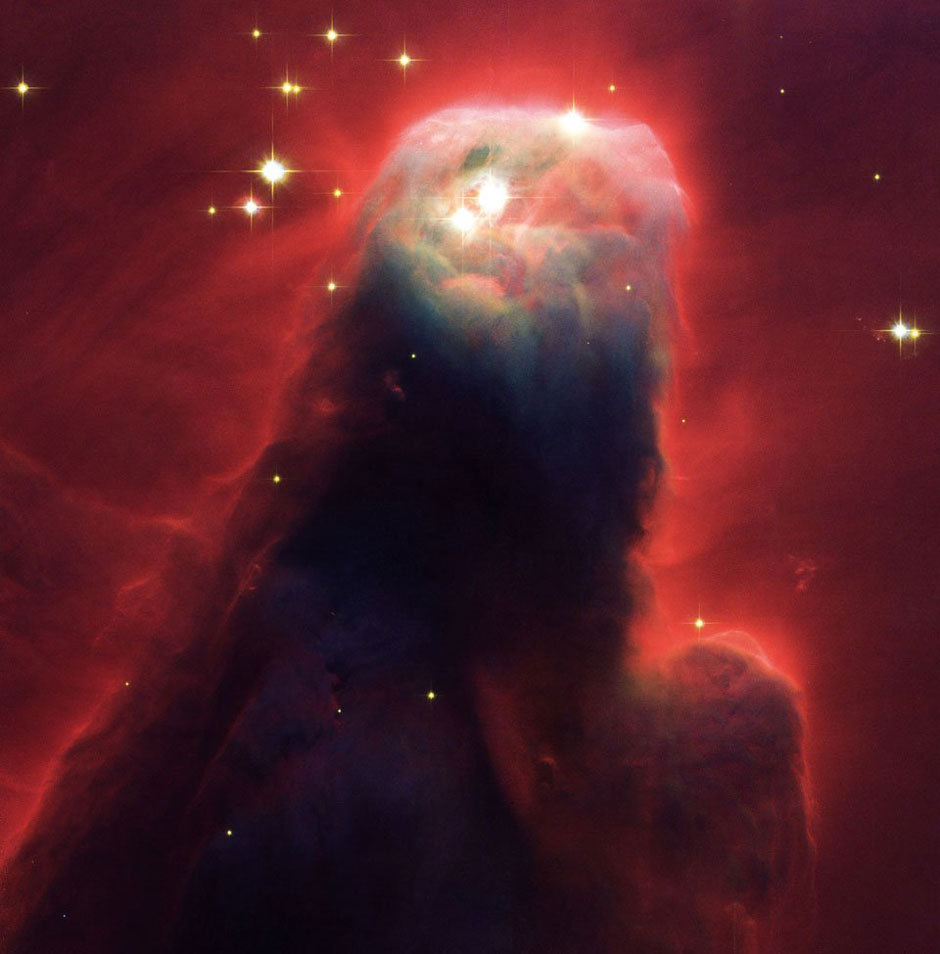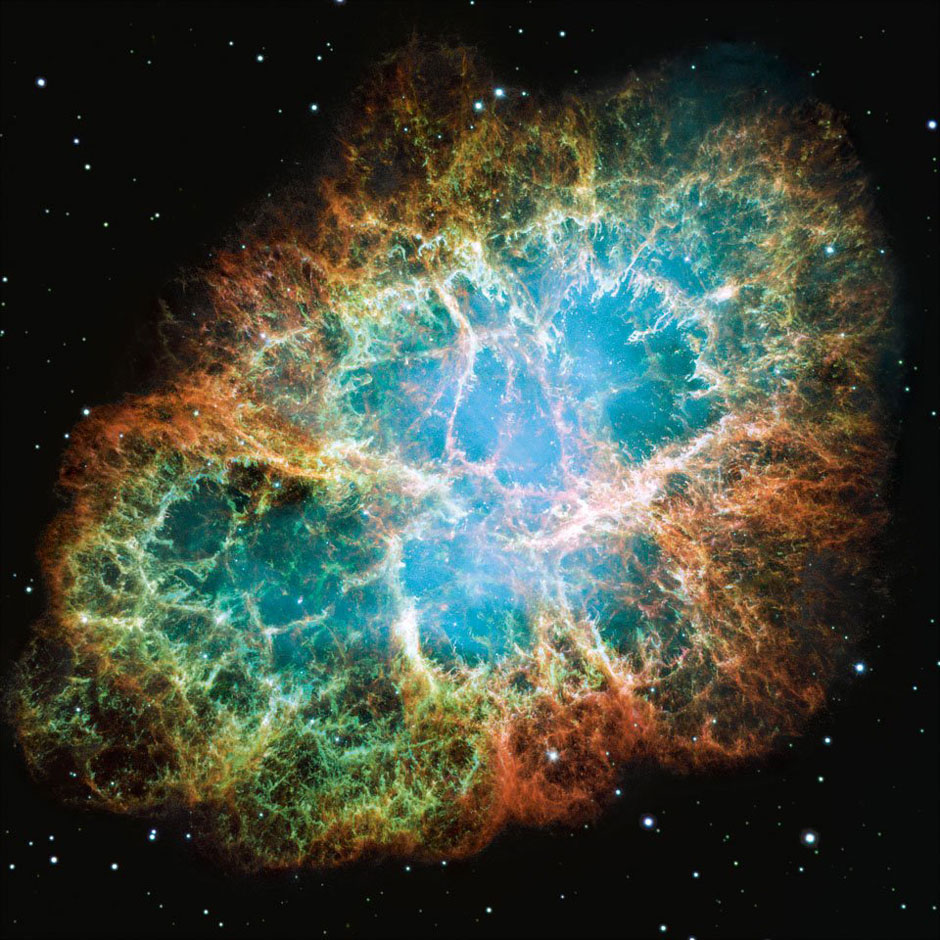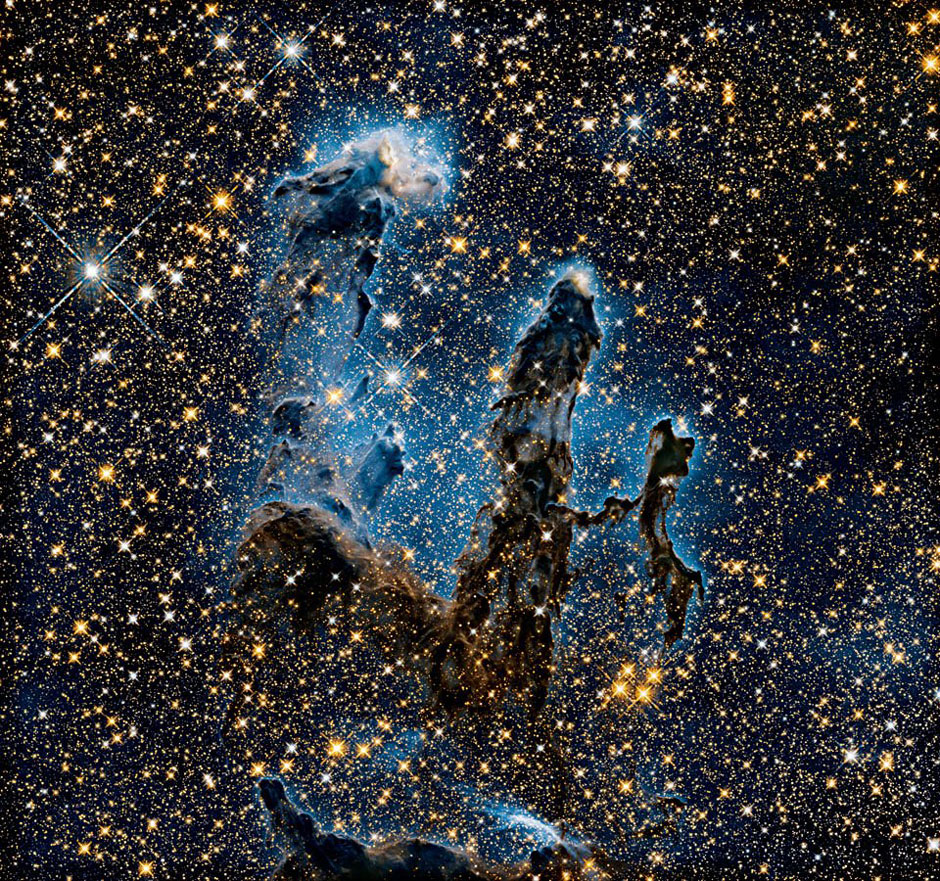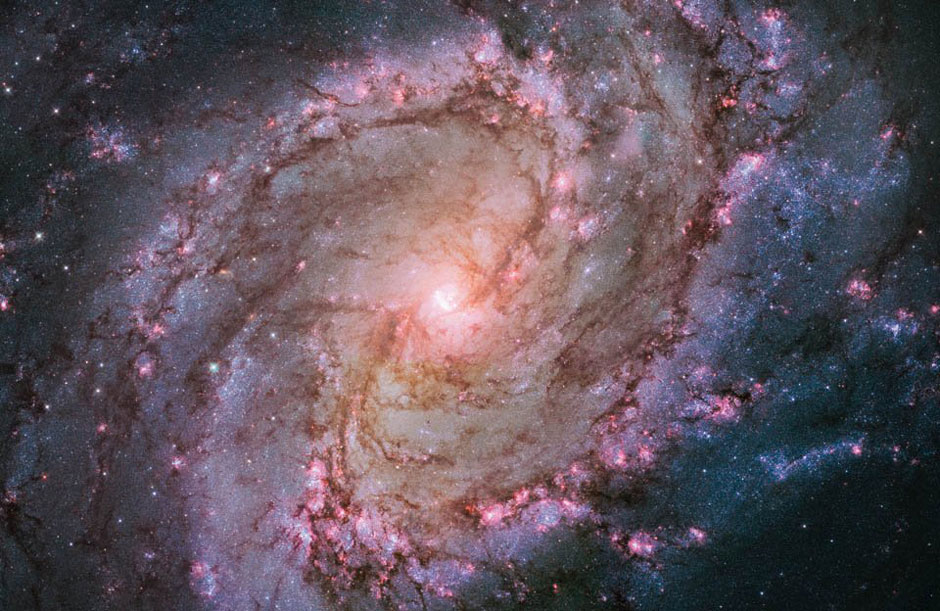When we see things for the first time, the pictures are always a surprise. Nature’s imagination is richer than ours. We imagine things to be simple and Nature makes them complicated. In Expanding Universe, a magnificent selection of pictures taken by cameras on the Hubble Space Telescope, the big surprise is dust. We imagined a universe of stars and galaxies gleaming brightly against a black sky. What we see is multicolored patterns of fluid motion, looking like eddies in a river or clouds in a sunset. The patterns are made of dust. Dust is made of tiny solid grains of carbon and rock and metals. The grains condense out of cooling interstellar gas, just as grains of smoke condense out of cooling flames over a forest fire. Most of what we see in the universe is dust. The reason is simple. We see only the surfaces of things, so that things appear big in our pictures when they have a big surface area. Dust has far more surface area than stars or planets. That is why the most striking pictures in this book are pictures of dust. It is not accidental that the editors chose to print on the jacket a spectacular picture of a huge dustcloud giving birth to newborn stars in the constellation Carina.
The Hubble telescope has two outputs of roughly equal importance. The first is the stream of scientific discoveries reported in technical papers and journals, addressed to professional astronomers and scientists. The second is the stream of marvelous pictures distributed all over the world, addressed to everybody, children and grown-ups, educated and uneducated. This book contains only a small fraction of the pictures. The pictures are processed and displayed with great care, with colors and contrast adjusted to make the scenes as truthful and vivid as possible. At the end of the book we can read in three languages an interview with Zoltan Levay, the photographer who organized the processing of the pictures. Levay did an outstanding job. He is largely responsible for the fact that people in many countries know the size and shape of the universe better than they know the geography of their own planet. The Hubble telescope is one of many astronomical instruments making important contributions to science, but Zoltan Levay’s imaging team is unique, a group of space experts and artists wholly dedicated to public education, in the Department of Public Outreach of the Space Telescope Science Institute.
Carl Sagan told us long ago that we are stardust. Our planet earth and everything that lives on it was formed by the accumulation of dust grains in a collapsing dust cloud. Every atom in our bodies once resided in an interstellar dust grain. And before that, the dust cloud was formed by the condensation of heavy atoms in the debris expelled from exploding stars. Dust plays an essential part, not only in the history of life, but in the history of the universe as a whole. Although dust is a very small part of the mass of the universe, it controls the birth and death of stars and the heating and cooling of interstellar gas. Dust is prominent in the Hubble pictures, not only because dust clouds are beautiful, but because dust-clouds are big players in the cosmic drama. The Hubble pictures show the universe evolving all the way from the Big Bang to our pale blue planet. At every step of the journey, dust has guided our destiny.
Expanding Universe: Photographs from the Hubble Space Telescope is published by Taschen. Freeman Dyson talks about his book Dreams of Space and Sky on C-SPAN May 31.



